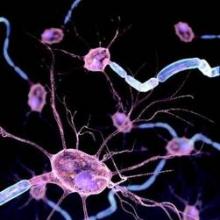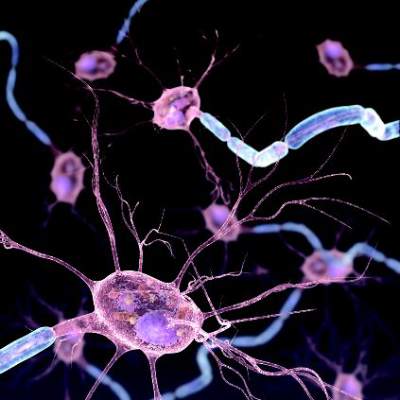User login
Migraines seem to be caused by activity inside the brain, and administering an inhibitor of the PAC1 receptor to the body’s control center may alleviate these painful events, suggested findings of a rat study by Simon Akerman and Peter J. Goadsby.
“To dissect the relative contributions of endogenous peripheral and central mechanisms in triggering migraine,” the researchers administered the pharmacologically similar vasodilator neuropeptides, vasoactive intestinal peptide and pituitary adenylate cyclase–activating peptide 38 (PACAP-38) intravenously and into the brains of the rats. Among the researchers’ findings was that only PACAP-38 imitated the effects of a migraine, in that it caused delayed activation and sensitization of central trigeminovascular neurons.
The researchers also gave the rats the PAC1 receptor antagonist intravenously and intracerebroventricularly. Only administration of the PAC1 inhibitor to the brain prevented delayed and spontaneous firing of the neurons, which is seen in migraine patients.
The study results suggested that “targeting the PAC1 receptor is a promising approach for migraine therapy,” wrote the researchers, who reported that they had no relevant financial conflicts.
Read the study in Science Translational Medicine (doi: 10.1126/scitranslmed.aaa7557).
Migraines seem to be caused by activity inside the brain, and administering an inhibitor of the PAC1 receptor to the body’s control center may alleviate these painful events, suggested findings of a rat study by Simon Akerman and Peter J. Goadsby.
“To dissect the relative contributions of endogenous peripheral and central mechanisms in triggering migraine,” the researchers administered the pharmacologically similar vasodilator neuropeptides, vasoactive intestinal peptide and pituitary adenylate cyclase–activating peptide 38 (PACAP-38) intravenously and into the brains of the rats. Among the researchers’ findings was that only PACAP-38 imitated the effects of a migraine, in that it caused delayed activation and sensitization of central trigeminovascular neurons.
The researchers also gave the rats the PAC1 receptor antagonist intravenously and intracerebroventricularly. Only administration of the PAC1 inhibitor to the brain prevented delayed and spontaneous firing of the neurons, which is seen in migraine patients.
The study results suggested that “targeting the PAC1 receptor is a promising approach for migraine therapy,” wrote the researchers, who reported that they had no relevant financial conflicts.
Read the study in Science Translational Medicine (doi: 10.1126/scitranslmed.aaa7557).
Migraines seem to be caused by activity inside the brain, and administering an inhibitor of the PAC1 receptor to the body’s control center may alleviate these painful events, suggested findings of a rat study by Simon Akerman and Peter J. Goadsby.
“To dissect the relative contributions of endogenous peripheral and central mechanisms in triggering migraine,” the researchers administered the pharmacologically similar vasodilator neuropeptides, vasoactive intestinal peptide and pituitary adenylate cyclase–activating peptide 38 (PACAP-38) intravenously and into the brains of the rats. Among the researchers’ findings was that only PACAP-38 imitated the effects of a migraine, in that it caused delayed activation and sensitization of central trigeminovascular neurons.
The researchers also gave the rats the PAC1 receptor antagonist intravenously and intracerebroventricularly. Only administration of the PAC1 inhibitor to the brain prevented delayed and spontaneous firing of the neurons, which is seen in migraine patients.
The study results suggested that “targeting the PAC1 receptor is a promising approach for migraine therapy,” wrote the researchers, who reported that they had no relevant financial conflicts.
Read the study in Science Translational Medicine (doi: 10.1126/scitranslmed.aaa7557).
FROM SCIENCE TRANSLATIONAL MEDICINE

